Defence Secretary John Healey used his speech at the Defence Investment Summit to set out how Britain’s record increase in military spending will be tied directly to industrial reform, exports, and skills.
Healey opened by referencing the Russian drone incursion into Poland, calling Moscow’s actions “reckless, unprecedented, dangerous” and confirming that the UK had asked its armed forces to look at ways of strengthening NATO air defences.
He argued that deterrence depends not only on armed forces but also on the strength of industry: “When a nation is forced to fight or it’s under threat, its forces are only strong as the industry that stands behind it.”
The Defence Secretary pointed to the newly published Defence Industrial Strategy, backed by £70 million over three years, and underpinned by what he described as “the largest sustained increase in defence spending since the end of the Cold War.” He said the reforms would overhaul procurement through segmented approaches, five-year acquisition pipelines, and the creation of a National Armaments Director.
Highlighting industry cooperation, Healey hailed the recent £10 billion frigate deal with Norway, which he said secures 4,000 UK jobs across a supply chain of 430 businesses. He also announced the establishment of an Office for Defence Exports to give government-to-government backing for UK firms and a consultation on a new offset policy to ensure economic benefits when buying from allies.
Investment in people was central to his message, with £182 billion committed to a new Defence Skills Strategy. “Creating jobs means nothing unless we’ve got the people, the skilled people, the people with a sense of pride and purpose to fill those vacancies,” Healey said.
Foreign investment was presented as a vote of confidence. He welcomed Tekever’s decision to expand its UK operations with a £400 million facility in Swindon, promising 1,000 jobs and production of advanced unmanned aerial systems.
He concluded by launching the Technology and Growth Alliance, bringing together BAE Systems, Leonardo, Thales, and QinetiQ with academics and investors to better harness defence innovation for wider national benefit. “Where defence leads in innovation, society can share in its benefits,” he said.


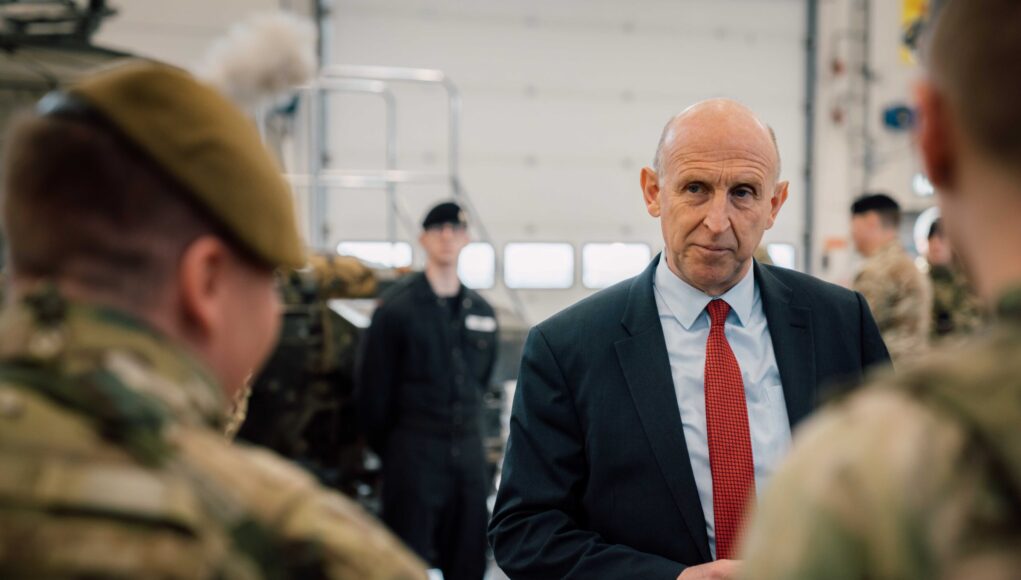
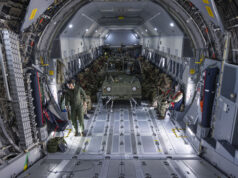



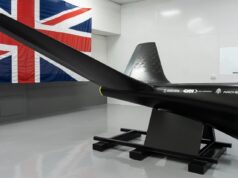
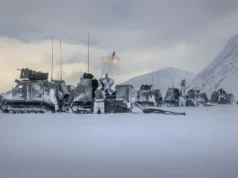

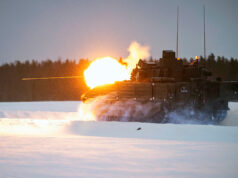

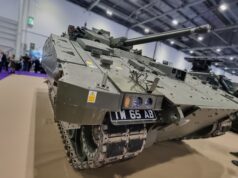

Cool.
So what are we buying then ?
‘defence spending surge’
What defence spending surge?
There is a surge in talking about increasing defence spending.
I haven’t seen any significant new orders!
Overseas aid was gutted and notionally transferred to defence but then taken away by everything else being charged to the defence tab.
But they are creating a “National Armaments Director” so that’ll take a few £billions.
Creating?
Or renaming existing and shuffling the deckchairs.
Several areas rebranded and called “new” since June 24, interested in the cost of such things.
You fool nobody.
You nailed it DM, “Shuffling Deckchairs with outside help. £5 Million in 6 months or an F35B over 10 years.
Nothing new then. Same old soundbites, same old priorities, the military way down that list.
Meanwhile, the cuts, many by stealth, continue.
It’s interesting how he lamented Tory cuts, hollowing out, and lack of kit when in opposition and now, not a peep.
It’s just years and years of the same old BS.
Quite why we have to have these people is beyond me at times.
Now then, you got me all upset again.
I think we do have new money, just spent on increasing weapons stockpiles, wage increases, and lots of new accommodation. All much needed of course. The real new money is post 2027.
Agree, additional funds for MoD will become available in a relatively predictable and increasing amount, post 2027. Whether that amount will be commensurate w/ the required pace of UK rearmament, based upon the rapidly evolving geopolitical environment, is probably an open and relevant question. 🤔
Perhaps there might just be new money but 13 years after Crimea was annexed.
I think the fundamental problem is no one is looking at a critical part of the building blocks of all this and that is what are the units of capability the British armed forces need to do the Job. In the end you can smuzz it up with 200 times lethality and supported by autonomous this.. all of that is simply a change of equipment.. it does not replace the need for a specific number of Units of capability.
So who has answered the basic questions
For the army:
how many MBT regiments do we need
How many armoured infantry battalions
how many Mec infantry
how many lighter and airmobile battalions
how many and what type of fires regiments
what air defence regiments are needed
what cav regiments are needed
what brigades will they form into CSS regiments/battalions are needed to deploy them all
for the navy
how many escorts and what mix of ASW, GP and AAW
how many SSNs
how many mine warfare ships
how many amphibious vessels and who are they delivering
how many carriers and what airwing is it carrying ( how many squadrons of jets do you need)
what patrol vessels are needed for constabulary work
what small ships flights do you need for your deployable ships and how many squadrons
what autonomous systems are needed to deploy with your ships ( this is the problem at present the MOD keep pretending autonomous systems can replace ships they cannot, they are capabilities deployed by ships or with ships).
for the RAF
how many fast jet squadrons are needed and how many jets are needed to supply those squadrons in a sustainable way
how many maritime patrol squadrons are needed with how many aircraft
how many AEW aircraft are needed
how many medium rotor squadrons are needed
how much tactical and strategic airlift is needed
what ground based air defence is needed to protect UK infrastructure
Then because we have decided we need ground based strategic conventional strike capabilities ( short to intermediate range cruise, drone and ballistic) how will this be organised.. is it air force, army or a new strategic rocket force..
once all of this is iterated you know how many people you need and what equipment you need to buy… as it is all the SDR talked about was broad brush new capabilities and directions.. how many battalions, how many squadrons and how many ships…. that is what matters for deterrent..
Talk, talk. Now I want to see Patri 6×6 =350 (with follow-on options), Ajax IFV = 600, Aries 2 (lengthened) +300 (with follow-on options), Boxer RCH155 =200. Now that is the kind of talk I’m waiting for!
Ok that’s all nice, development of Tec and industrial capacity is import….. but you sustain the development of tec and industrial capacity by actually ordering and building the things to give to your armed forces who then use and perfect them and feedback that operational experience back to industry so it can build more better stuff… in a virtuous cycle of improvement… ohh yes and you actually need the armed forces with the personal to undertake said operations…
so far all I have seem is the initial development stimulus ( the spark plug that starts the engine/cycles of developing better and better capability) now we need the orders for the stuff and the plan to recruit and train the correct number of service personal to operate the stuff (fuel and air mix to keep the pistons firing and the cycle continuing)….
fundamentally that is why mass is important to developing the very best capabilities.. you need the mass of stuff and people to practice to make better stuff and practice more and more… to make better skilled people. Point of fact the RN was not the best because it was just simply magically better, it was the best because It was bigger and that allowed it to become the best.. the USN followed the same path… Small is not beautiful and shrinking is not consolidating expertise, its a path to a downward cycle to mediocrity (there was a reason the NHS shut all the small accident and emergency departments.. lack of ability to practice and develop).
No, it must deliver enhanced defensive capabilities. Any jobs creation is a bonus. Get your priorities in the right fekin order!
Blether blether blether. Everything is moving at the pace of an athritic ant carrying some heavy shopping. AllStarmer is interested in is rapid construction of data centres with no understanding what they are for. Military spending is increasing a little bit but nothing is getting bought. The debacle at Harland and Wolf just about says all you need.
“defence spending surge”? Healey has obviously started taking lessons from Reeves. Count everything twice, take away your birtday date , double it and Oh, there’s my budget. What a shambles.
Ok dear! Another click bait article on defence spending. The choice between defence spending and creation of UK jobs and sovereign skills and capabilities might be a false dichotomy; just a thought.
indeed they are not separate but instead two sides of the same coin, you cannot have strong sustainable military power without significant industrial capacity to back it, otherwise you create an unsustainable glass cannon but you cannot have a strong military industrial complex without a significant military to buy and test and support improvements.
The UKs military industrial capabilities withered to nothing because the MOD stopped buying, you can use some industrial stimulus packages to restart the industrial capacity but without the armed forces buying and using it with simply wither away. Unfortunately it seems Labour may have fixated on the quick easy headline of industrial stimulus packages but have not yet got to hard yards of redeveloping the armed forces and buying then deploying the product from the military industrial complex.
The frustration arises because the govt is adopting supply side policies rather than demand led policies. As I see it, the govt argument goes like this – we are where we are. Force personnel numbers have fallen so low that the rate at which new weapons, even if bought off the shelf, can be brought into service means that it makes sense to review defence strategy and build sovereign industrial capabilities. So, for example, it makes more sense to keep Warrior going for a few years and design and build IFV manufacture in Merthyr Tydfil than join the queue of customers waiting for CV90. The army probably have enough on their plate with Boxer and Ajax. We see this approach across the board e.g. Puma replacement. There are exceptions like MLRS and F-35B and now F-35A + B61, NSMwhere urgency dictates foreign purchase from strategic partners because the lead time for sovereign capability is too long. That said, we are developing GCAP and have committed £15b to AWE for a sovereign warhead. And we have committed to several new missile developments.
Perhaps increased spending will indeed be tied to industry reform. Unfortunately we’ll have to wait until 2027/28 to find out, three years into the Parliament. Let’s hope nothing serious happens in the meantime while our armed forces continue to be hollowed out. Two and a half more years of posturing. Like our military, I can hardly wait.
I’d prefer the increase in defence spending to produce a credible and actual increase in equipment, capability, and mass to UK armed forces and not to line the pockets of multinational defence companies.
Nail on head.
Sadly, the cynic in me thinks that is EXACTLY what HMG prioritize regards defence.
Sorry all for my endless skepticism, they are all words, every last one of them, and I won’t ever change my view unless something concrete happens and the words end.
Healey: Defence spending surge must deliver growth and jobs?
Wrong again, Mr Healey. It must deliver a credible, capable military of a scale that can defend our interests and deter our enemies. We are very far from that. Let’s move on from the speech making phase, shall we? That impresses noone, especially not the Russians.
To have a defence spending surge you actually have to increase defence spending.
“Defence Spending Surge” right ok so when the Army falls to 69,000 or lower in the next 2 years as projected and 1 person doing 3+ jobs what will be the excuses then?
all articles like this are really just filling the void until the spending/ equipment plan comes out – probably post budget. Until then, its easy (and perhaps correct) to criticise them for saying nothing new repeatedly. But it won’t change the fact that we won’t know more till that plan is unveiled. Behind the scenes, there may or may not be conversations happening (the stretched Ajax is an example of what might be getting discussed in private for instance), but we won’t know whether that is just industry producing a concept car, or the result of confidential discussions with a view to ordering, until the plan is published. We might not like that, but tough really that’s how it is